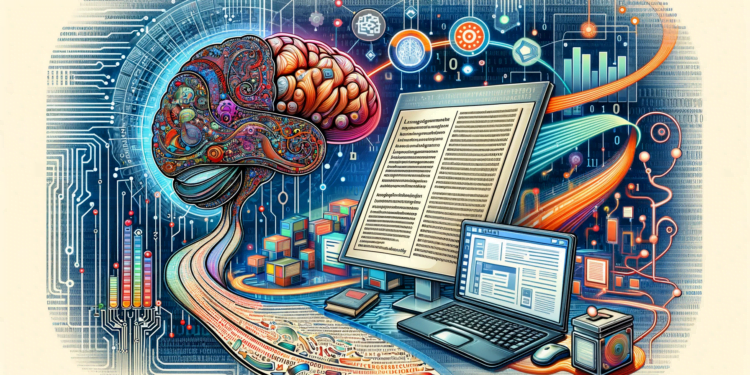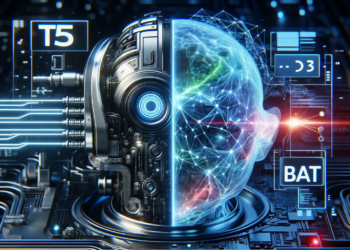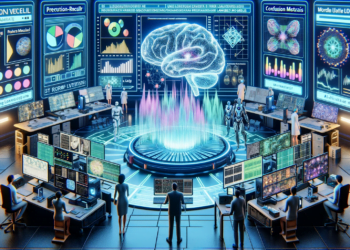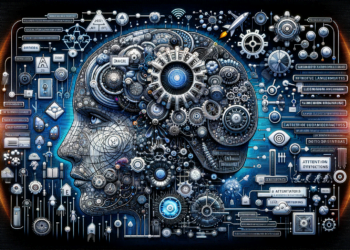Automatic summarization (AS) is a promising subfield within the domain of artificial intelligence (AI) that focuses on distilling extensive and complex information into concise and relevant snippets. Language models based on transformer neural networks, such as BERT, GPT-3, and T5, are at the forefront of current research, significantly enhancing the capability to synthesize lengthy texts.
Understanding the Theoretical and Technical Foundation
Language models are systems designed to understand, interpret, and generate human text. They utilize deep learning techniques, particularly transformer architectures, which have proven effective due to their ability to handle sequences of data and their focus on the relevant context of each word within a sequence.
Transformer Architectures and Their Relevance to AS
Transformers are a type of neural network architecture introduced in the paper “Attention Is All You Need” (Vaswani et al., 2017). Essentially, these models learn complex relationships between words in text sequences using attention mechanisms, which simplify parallel processing and allow models to scale and handle longer text sequences than preceding techniques like LSTM and GRU.
BERT and GPT-3: Divergence in Methodology
BERT (Bidirectional Encoder Representations from Transformers) introduces a crucial innovation in the bidirectional contextualization of text; during pre-training, it gives equal weight to each word in the sequence, thus learning to predict hidden words based on the entire available context. In contrast, GPT-3 (Generative Pre-trained Transformer 3) adopts a unidirectional generative strategy, learning to predict the next word in a sequence based on all the preceding ones, capable of coherently generating continuous text.
Advanced Algorithms for Information Synthesis
The process of AS involves simplifying, shortening, and abstracting content to create coherent and succinct summaries. The incorporation of language models has led to notable advancements in this area.
Extractive vs. Abstractive Summarization
The methodologies of AS fall into two main categories:
- Extractive Summarization: Identifies and concatenates the most important sentences from the original text to form a summary. Here, techniques such as semantic ranking and clustering are vital.
- Abstractive Summarization: Generates a summary that may contain new sentences and constructions, not limited to the source text. Models like T5 (Text-to-Text Transfer Transformer) exhibit outstanding abilities in this area, generating summaries that are not only relevant but also natural and cohesive.
Practical Application: Emerging Use Cases
With the continuous improvement of AS capability, multiple sectors have begun to see significant practical applications.
Legal and Financial Sector
In the financial and legal fields, where documents are lengthy and dense, AS offers an opportunity to summarize reports, contracts, and legislation, enabling professionals to make informed decisions quickly.
Healthcare and Medical Assistance
Patient notes and medical research documents are prominent examples where AS can transform information management, summarizing patient cases or highlighting key findings in medical literature.
Benchmarking and Recent Advances
In evaluating the efficacy of AS models, metrics such as BLEU, ROUGE, and METEOR are used. These models are measured using benchmarks like CNN/Daily Mail and the New York Times Annotated Corpus, allowing for standardized comparisons.
Recent developments like models trained with cross-attention and task-specific fine-tuning techniques offer enhancements in the quality of generated summaries, reducing discrepancies and improving the relevance and cohesion of the produced text.
Challenges and Future Directions
Challenges remain, especially in understanding and reproducing context and in reducing the inherent bias in training data. Ethical and privacy issues also arise in summarizing sensitive information.
As we move forward, we can anticipate the integration of multimodal capabilities, allowing AS models to handle not just text, but also visual and auditory data. Adaptability to different languages and specialized jargon will be another frontier of innovation, enhancing the versatility of AS.
Conclusion
The potential of artificial intelligence in information synthesis through AS is immense and growing. Language models, centered around transformer architectures, continue to evolve, offering unprecedented opportunities for informational efficiency across various fields. Constant iteration over the intersection of theoretical developments and practical applications will continue to shape this exciting AI field. As we face its inherent challenges, AS is destined to become an increasingly powerful and ubiquitous tool in automated linguistic processing.






















